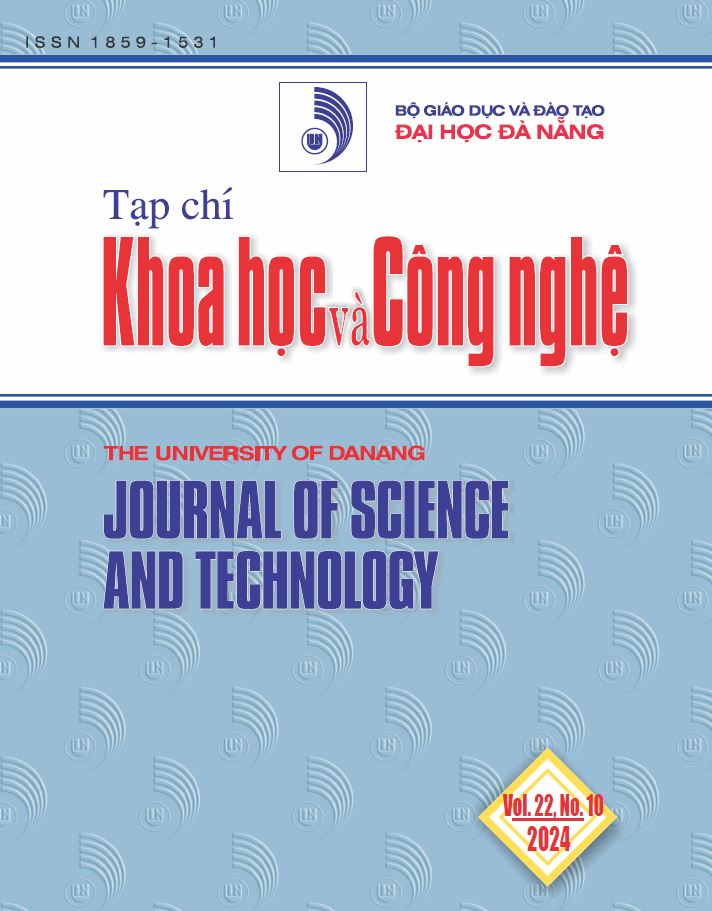Chiến lược điều khiển hệ thống điện mặt trời mái nhà kết hợp với ắc quy theo hướng tự sản tự tiêu
 Tóm tắt: 364
Tóm tắt: 364
 |
|  PDF: 251
PDF: 251 
##plugins.themes.academic_pro.article.main##
Author
-
Ma Thị Thương HuyềnTrường Đại học Điện lực, Việt NamVũ Hoàng GiangTrường Đại học Điện lực, Việt Nam
Từ khóa:
Tóm tắt
Để hạn chế ảnh hưởng do tính chất bất định của các nguồn năng lượng tái tạo tới quá trình vận hành an toàn và ổn định của lưới điện, nâng cao hiệu suất sử dụng năng lượng cho hộ tiêu thụ, sử dụng hệ thống lưu trữ năng lượng là giải pháp đang được nhiều quốc gia quan tâm và thực hiện. Bài báo trình bày chiển lược quản lý và điều khiển vận hành phóng, nạp của hệ thống lưu trữ kiểu ắc quy trên cơ sở đảm bảo nhu cầu của phụ tải cho một hộ tiêu thụ có lắp đặt hệ thống điện mặt trời mái nhà. Thuật toán điều khiển thực hiện nạp cho ắc quy vào những thời điểm công suất của nguồn điện mặt trời dư thừa và giờ thấp điểm, cho ắc quy phóng điện vào giờ cao điểm nhằm giảm chi phí tiền điện cho hộ tiêu thụ và san bằng đồ thị phụ tải. Kết quả mô phỏng cho thấy, chi phí tiền điện của hộ tiêu thụ đã được giảm đáng kể xác nhận tính hiệu quả của thuật toán đề xuất.
Tài liệu tham khảo
-
[1] Jin, “Impact of renewable energy penetration in power systems on the optimization and operation of regional distributed energy systems”, Energy, vol. 273, 2023, doi: 10.1016/j.energy.2023.127201.
[2] A. Ufa, Y. Y. Malkova, V. E. Rudnik, M. V Andreev, and V. A. Borisov, “A review on distributed generation impacts on electric power system”, Int. J. Hydrogen Energy, vol. 47, no. 47, pp. 20347–20361, 2022, doi: https://doi.org/10.1016/j.ijhydene.2022.04.142.
[3] Lorenzi and C. A. S. Silva, “Comparing demand response and battery storage to optimize self-consumption in PV systems”, Appl. Energy, vol. 180, 2016, doi: 10.1016/j.apenergy.2016.07.103.
[4] Moshövel et al., “Analysis of the maximal possible grid relief from PV-peak-power impacts by using storage systems for increased self-consumption”, Appl. Energy, vol. 137, 2015, doi: 10.1016/j.apenergy.2014.07.021.
[5] IEA, “Global EV Outlook 2023 – Analysis - IEA”, 2023.
[6] Struth et al., “A Critical Review of the Effect of Grid Integrated PV-Storage-Systems Self-Consumption”, Ires 2013, no. November, p. 54, 2013.
[7] T. Tran, K. M. Muttaqi, and D. Sutanto, “A Robust Power Management Strategy with Multi-Mode Control Features for an Integrated PV and Energy Storage System to Take the Advantage of
ToU Electricity Pricing”, IEEE Trans. Ind. Appl., vol. 55, no. 2, 2019, doi: 10.1109/TIA.2018.2884622.
[8] Azuatalam, K. Paridari, Y. Ma, M. Förstl, A. C. Chapman, and G. Verbič, “Energy management of small-scale PV-battery systems: A systematic review considering practical implementation, computational requirements, quality of input data and battery degradation”, Renewable and Sustainable Energy Reviews, vol. 112. 2019. doi: 10.1016/j.rser.2019.06.007.
[9] Elkazaz, M. Sumner, E. Naghiyev, S. Pholboon, R. Davies, and D. Thomas, “A hierarchical two-stage energy management for a home microgrid using model predictive and real-time controllers”, Appl. Energy, vol. 269, 2020, doi: 10.1016/j.apenergy.2020.115118.
[10] Li et al., “Optimal battery schedule for grid-connected photovoltaic-battery systems of office buildings based on a dynamic programming algorithm”, J. Energy Storage, vol. 50, 2022, doi: 10.1016/j.est.2022.104557.
[11] M. Alam, M. H. Rahman, M. F. Ahmed, M. Z. Chowdhury, and Y. M. Jang, “Deep learning based optimal energy management for photovoltaic and battery energy storage integrated home micro-grid system”, Sci. Rep., vol. 12, no. 1, 2022, doi: 10.1038/s41598-022-19147-y.
[12] Zedak, A. Belfqih, J. Boukherouaa, A. Lekbich, and F. El Mariami, “Photovoltaic and Battery Systems Control and Monitoring for Energy Management using IoT”, in Proceedings of 2021 9th International Renewable and Sustainable Energy Conference, IRSEC 2021, 2021. doi: 10.1109/IRSEC53969.2021.9741199.
[13] Sorour, M. Fazeli, M. Monfared, A. A. Fahmy, J. R. Searle, and R. P. Lewis, “Forecast-Based Energy Management for Domestic PV-Battery Systems: A U.K. Case Study”, IEEE Access, vol. 9, 2021, doi: 10.1109/ACCESS.2021.3072961.
[14] Jamroen, A. Pannawan, and S. Sirisukprasert, “Battery Energy Storage System Control for Voltage Regulation in Microgrid with High Penetration of PV Generation”, in Proceedings - 2018 53rd International Universities Power Engineering Conference, UPEC 2018, 2018. doi: 10.1109/UPEC.2018.8541888.
[15] Almasalma and G. Deconinck, “Simultaneous Provision of Voltage and Frequency Control by PV-Battery Systems”, IEEE Access, vol. 8, 2020, doi: 10.1109/ACCESS.2020.3018086.
[16] M. Tercan, A. Demirci, E. Gokalp, and U. Cali, “Maximizing self-consumption rates and power quality towards two-stage evaluation for solar energy and shared energy storage empowered microgrids”, J. Energy Storage, vol. 51, p. 104561, 2022, doi: https://doi.org/10.1016/j.est.2022.104561.
[17] Wang, R. Das, G. Putrus, and R. Kotter, “Economic evaluation of photovoltaic and energy storage technologies for future domestic energy systems–A case study of the UK”, Energy, vol. 203, p. 117826, 2020.
[18] Ruf, “Limitations for the feed-in power of residential photovoltaic systems in Germany – An overview of the regulatory framework”, Sol. Energy, vol. 159, pp. 588–600, 2018, doi: https://doi.org/10.1016/j.solener.2017.10.072.
[19] Mukisa, R. Zamora, and T. T. Lie, “Store-on grid scheme model for grid-tied solar photovoltaic systems for industrial sector application: Costs analysis”, Sustain. Energy Technol. Assessments, vol. 41, p. 100797, 2020.
[20] Kästel and B. Gilroy-Scott, “Economics of pooling small local electricity prosumers - LCOE & self-consumption”, Renewable and Sustainable Energy Reviews, vol. 51. 2015. doi: 10.1016/j.rser.2015.06.057.
[21] Yahoui, H.-G. Vu, T.-T.-H. Ma, and T.-K. Tran, “A control strategy for DC Smart Grids operation”, in 2019 First International Symposium on Instrumentation, Control, Artificial Intelligence, and Robotics (ICA-SYMP), 2019, pp. 230–233. doi: 10.1109/ICA-SYMP.2019.8646312.
[22] The Ministry of Industry and Trade, “Circular No. 30/2019/TT-BCT dated November 18, 2019 of the Ministry of Industry and Trade on amending and supplementing a number of articles of the Circular No. 25/2016/TT-BCT and the Circular No. 39/2015/TT-BCT, Vietnam”, 2019.



